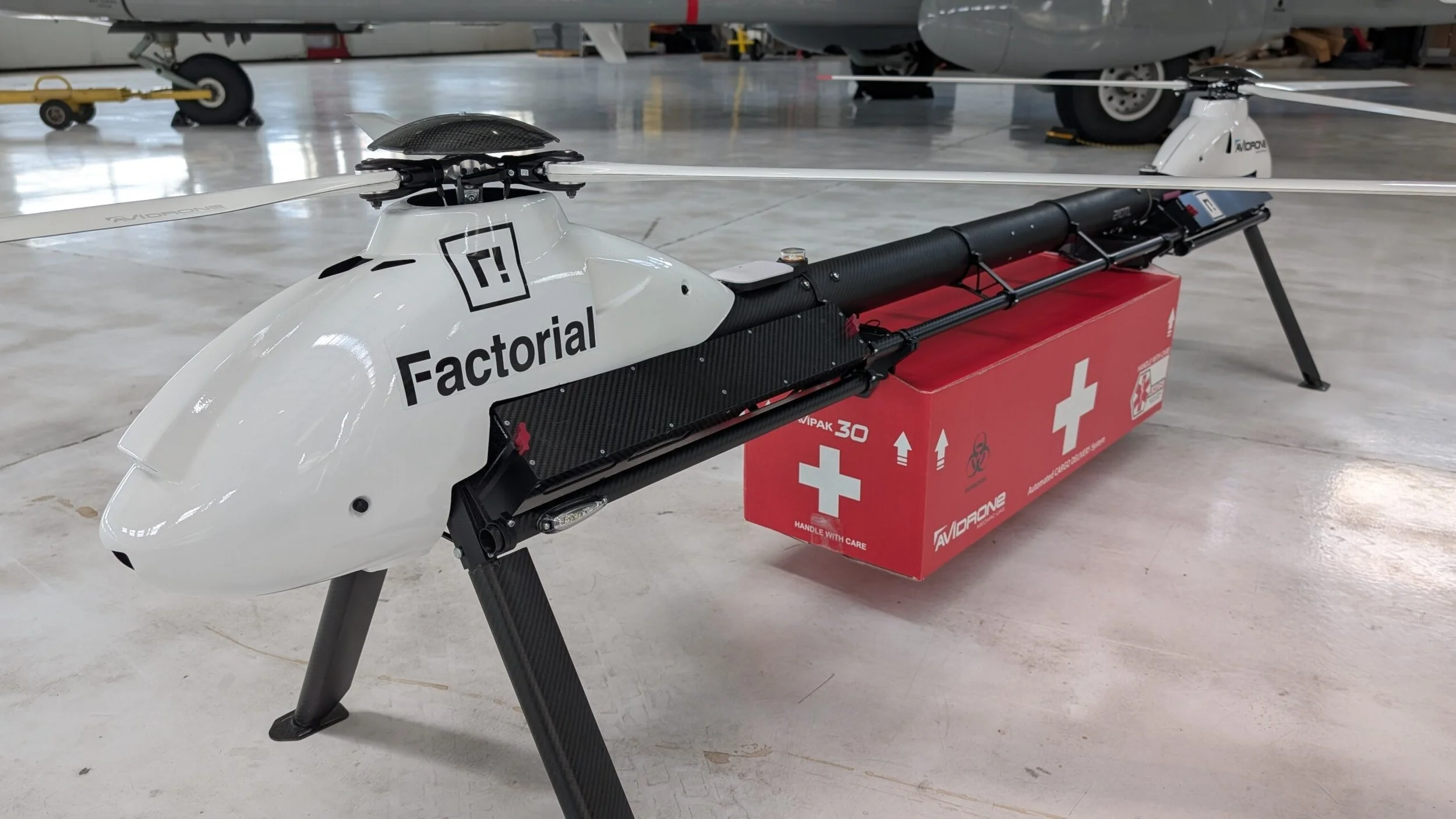Solid-State Batteries Cross the Aisle: From EV Hype to Aviation Ground Truth
Battery manufacturer, Factorial Energy, ships solid-state batteries to Avidrone Aerospace to test its long-range autonomous aircraft, for commercial and defence missions.
Credit: Factorial Energy/Avidrone Aerospace
How OEM partnerships, safety cases and turnaround times decide who ships first
Automakers stoked expectations that solid-state batteries would deliver a step-change in energy density and safety for electric vehicles. Aviation companies have listened closely but are optimising against a different objective function: not just range, but turnaround time, thermal stability, fault tolerance, and airworthiness evidence across thousands of cycles. Solid-state promises higher specific energy and lower fire risk, yet aeronautical regulators will interrogate behaviour under abuse, thermal runaway propagation, and maintenance in operational environments that include rapid charge, altitude and temperature gradients. The lesson from automotive still applies: integration beats chemistry.
The aviation side has a working precedent for certifying electrical propulsion. In 2020, EASA issued the first type certificate for an electric aeroplane (Pipistrel Velis Electro), creating a public trail of what “sufficient evidence” looks like: propulsion system safety assessments, battery monitoring, containment and maintenance practices that survive line operations. That certificate did not involve solid-state cells, but it anchors the method by which new chemistries will be judged—an invaluable guide for investors and partners deciding how to stage programmes.
For EVs, pack architecture and power electronics determine whether theoretical cell gains translate into real-world charging performance and lifetime. In aviation, the same architectural levers exist, but constraints tighten: thermal pathways, pack segmentation, fault isolation, and state-of-health telemetry must be demonstrably robust. The more a solid-state supplier can ship qualification artefacts—abuse test data, model correlation, and fieldable diagnostics—the faster an airframer can include the chemistry in a certifiable system-of-systems rather than a lab demo.
Commercially, the narrative that lands is pragmatic. Airframers and operators look for partners who bring a package: cells with traceable provenance; BMS firmware with explainable failure detection; pack-level fire containment; and a service model tied to cycles and calendar life. Airport operations drive requirement creep—turn times and charging infrastructure—so suppliers that align with emerging aircraft-charging standards and ground-ops processes shorten sales cycles. (SAE’s AS6968 work on conductive aircraft charging shows where airports and OEMs are converging, which de-risks infrastructure planning for operators.)
Go-to-market tends to crystallise around co-development with an airframer and a reference route operator. The airframer provides the certification path; the operator forces discipline on maintenance, spares and turnaround. MRO partners help define inspection intervals and warranty envelopes that financiers can underwrite. Even for roadmaps that begin in EVs, the translatable assets are reliability data, thermal models, and power-electronics integration—not press releases. When a battery vendor shows up with validated failure-mode coverage and an airport infrastructure story, the burden of proof shifts in their favour.
In short: the winners will bridge lab metrics to line-operations evidence, show up with certifiable artefacts, and integrate with ground-charging standards so aircraft don’t queue for power they can’t accept. Solid-state hype doesn’t fly; operational fluency does.
